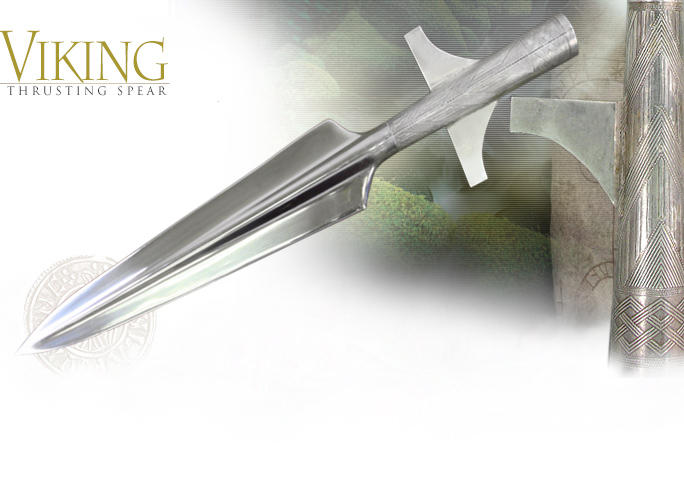| |
 |

|
|
|
VIKING THRUSTING SPEAR HEAD XH2038 CAS Hanwei XH2038 CAS Hanwei
The decorated spearheads demonstrate the Viking’s creative mix of art and war, whereby weapons often carried intricate patterns, created using the “Niello” process. This involved using an alloy of several metals (notably silver) mixed with sulfur which was rubbed into an incised pattern and then fired. Where the alloy is rubbed into the engraving, it remains black while the rest of the surface is polished to a bright finish. CAS Hanwei's decorating process provides a lustrous, permanent Niello-like effect. Each spearhead has a shaft diameter of 1”.
The Viking Thrusting Spear was more commonly used than swords, being much less expensive to produce. The wings or lugs, of Frankish origin, both limited the penetration of the weapon and provided an effective parrying guard. Total head length is 16 1/2 inches.

|
|
|
The spear was the most commonly used weapon in the Viking age. During this time, spear heads took many forms. Some spear heads, including like the Hanwei replica above, had "wings" on the head, useful for a variety of tricks. These are called krókspjót (barbed spear) in the stories. The spearheads were made of iron, and, like sword blades, were made using pattern welding techniques during the early part of the Viking era. They were frequently decorated with inlays of precious metals or with scribed geometric patterns. Spear heads were fixed to wooden shafts using a rivet. The sockets on the surviving spear heads suggest that the shafts were typically round, with a diameter of 2-3cm (about one inch). A strong, straight-grained wood such as ash was used.
|
|
 |
 |
 |
|
|
|
|

CAS HANWEI is the Registered Trademark of CAS HANWEI Swords, Knives, Collectibles
Beware of counterfeits! Always insist on the officially licensed high quality collectibles. |
|
|
|
|
|